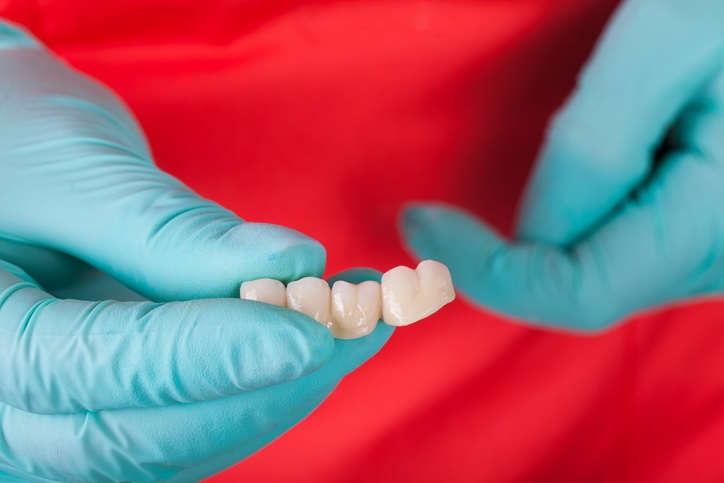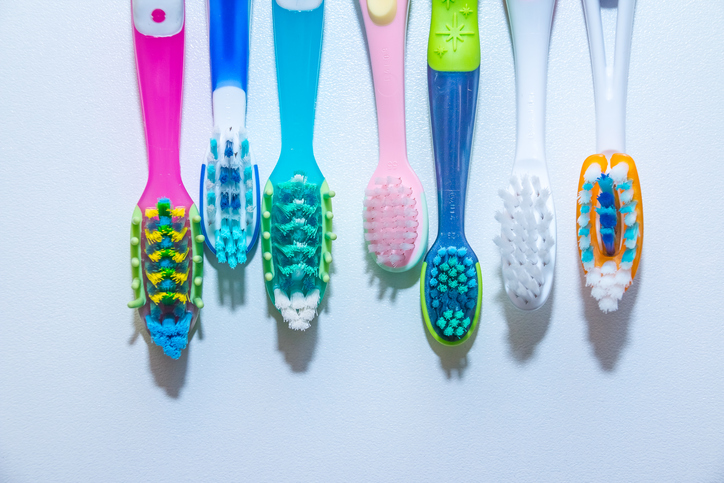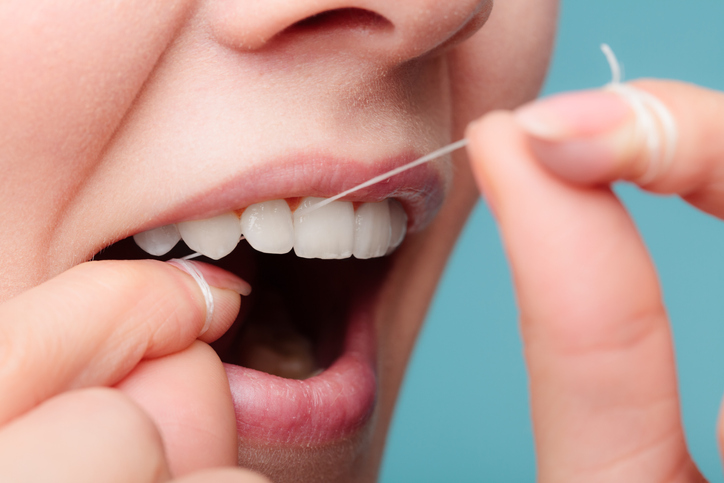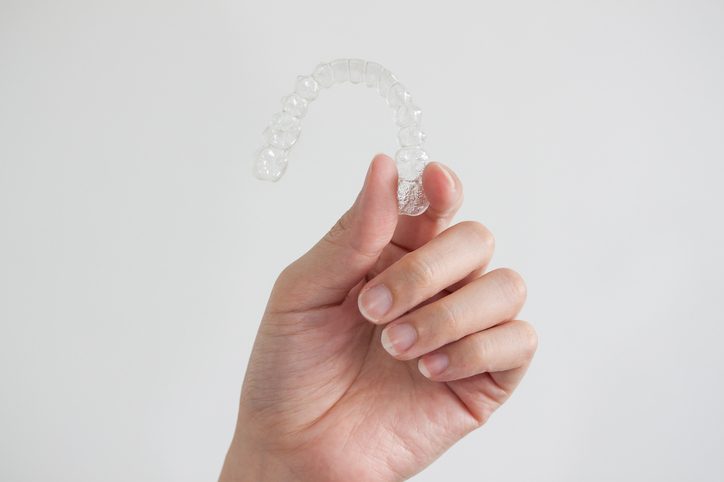-
Improve Your Smile With Implants

How do you feel about your smile? Are you confident enough to flash it openly to the world, or do you think of it as something to be hidden behind closed lips or concealed behind your hand? Smiling makes you look younger and more attractive, boosts the mood of those around you, and can even improve your health by boosting stress-reducing chemicals in your brain. So what’s holding you back? If missing teeth are making you embarrassed about your smile, it may be time to consider dental implants.
Dental implants are one of many options for replacing a missing tooth, but they’re the best in terms of functionality and aesthetics. Especially if the missing tooth space has no surrounding teeth, a dental implant is the way to go. There are a few different ways that dentists use dental implants:
- Single implant to replace a single tooth: An implant that replaces a single tooth looks like a screw or cylinder. This is placed in the jaw, and bonds with the jawbone to provide an anchor for a crown. The dentist then uses an abutment as an extension for the new tooth to be attached.
- Supported removable dentures: Implant dentistry has advanced over the past 25 years, and one of the most important advancements is the development of miniature dental implants, which are used to stabilize dentures. In just one visit, in about an hour, with no cutting of the gums and no stitches, mini dental implants can be placed to support your dentures. There’s very little discomfort involved, and no long-term healing, but the results are impressive. In a procedure that’s benefited thousands of patients, your dentist will place these mini-implants into your jawbone, and then securely attach them to the base of your dentures. It’s a revolutionary solution to loose dentures, allowing you to eat, speak, and smile, comfortably and confidently.
- Supported bridge: An implant-supported bridge is a great option if you have several teeth that need to be replaced. With a supported bridge, the bone is better preserved than it would be with a fixed bridge or removable partial dentures because it replaces some of the tooth roots that had deteriorated. Getting a supported bridge usually takes two trips to the dentist, during which time your dentist will numb and clean the surrounding teeth and reduce those teeth so that the crowns can be fitted. He or she will then make a mold or impression of the teeth for the creation of a customized permanent impression, which takes a week or two to be ready. The patient is then fitted with a temporary bridge until the permanent bridge is ready for placement, at which point the dentist will remove the temporary bridge and replace it with the permanent one. After that, the bridge just needs to be adjusted for the proper bite and fit, then permanently bonded into the mouth.
At Glenwood Premier Dental, we believe that a healthy, confident smile is an important part of a happy and healthy lifestyle. Our staff of caring professionals is committed to offering a wide range of dental services, exceeding our patients’ expectations, and providing the best possible service. We offer dental exams and teeth cleanings, implant dentistry, Invisalign, laser dentistry, teeth whitening, veneers, and more, using state of the art technology in a comfortable and friendly environment. If you’re looking for dental care in Hazlet, contact us through our website or call 732.264.4477 for more information.
-
Cosmetic Dentistry Options by Glenwood Premier Dentistry

If you’re lacking confidence in your smile, have you ever considered cosmetic dentistry? Once the domain of the rich and famous, cosmetic dentistry is now something within the reach of ordinary people. In addition to enhancing the look of your teeth, cosmetic dentistry can improve your teeth’s function, making it not just a confidence booster but also a boon to your quality of life. At Glenwood Premier Dental, we offer top-of-the-line cosmetic dentistry services, using state-of-the-art techniques, to fix chipped, discolored, and even missing teeth, to brighten and beautify your smile.
Some of the services we offer include:
- Tooth-colored fillings: Patients used to be limited to amalgam/metal fillings, which looked anything but natural. We now have white fillings, or composites, matched to the natural color of your teeth so that no one will even notice them. You can choose from fillings made of resin or porcelain.
- Bonding: Dental bonding involves the application of a tooth-colored resin material to your teeth. This resin, a durable plastic material, is applied, shaped, and hardened with a special light that bonds the material to your teeth. It’s used to:
- Repair decayed teeth and fill cavities
- Repair chipped or cracked teeth
- Close spaces between teeth
- Make teeth appear longer
- Change the shape of teeth
- Improve the look of discolored teeth
- Protect part of a tooth’s root that’s been exposed by receding gum lines
- Invisalign: Much more convenient than traditional metal braces, Invisalign aligners are removable, clear braces, hand-crafted and designed specifically for your mouth. They gradually shift your teeth into position, without giving the obvious look of braces.
- Porcelain crowns and veneers: If your tooth is damaged, your dentist might recommend a crown or veneer to cover it. Crowns are thick caps that cover the tooth’s entire exterior, while veneers are thin and only cover the front of the tooth. Porcelain crowns and veneers have a very natural appearance, which makes them a popular option for many people.
- Teeth whitening: Our professional, in-office teeth whitening procedure allows us to make your teeth several shades lighter in a short timeframe. Our highly-trained cosmetic dentists can help to ensure that your teeth whitening occurs safely and effectively, and if you have any issues like tooth sensitivity, we will properly address them.
When you’re ready to improve the beauty and function of your mouth through cosmetic dentistry, we’re here to help. At Glenwood Premier Dental, we believe that a healthy, confident smile is an important part of a happy and healthy lifestyle. Our staff of caring professionals is committed to offering a wide range of dental services, exceeding our patients’ expectations, and providing the best possible service. We offer dental exams and teeth cleanings, implant dentistry, Invisalign, laser dentistry, teeth whitening, veneers, and more, using state of the art technology in a comfortable and friendly environment. If you’re looking for dental care in Hazlet, contact us through our website or call 732.264.4477 for more information.
-
Healthy Snack Ideas for Back to School

Eating a balanced diet can help you maintain a healthy waistline, but have you considered the effects food can have on your smile? As your kids prepare to go back to school, make sure their lunch boxes include tasty, mouth-healthy snacks. Here’s a look at what foods can help fight tooth decay and prevent cavities for healthy smiles during the coming school year.
Yogurt
If you’re used to including gelatin or pudding cups in your child’s lunchbox, switch to something similar but much healthier. Yogurt is a dairy product with tooth-strengthening calcium and potassium. This and other types of dairy, including milk and cheese, are known to neutralize the acids in your mouth to help prevent enamel erosion. Yogurt also contains probiotics that promote healthy gums and help mouth sores heal faster.
Pita Chips and Dip
Instead of greasy potato chips, encourage your kids to eat pita chips, a healthier alternative for your teeth and body. This snack tastes delicious when served with hummus, guacamole, or yogurt-based chip dip.
Fresh Fruit
It’s quick and easy to grab fruit snacks off the pantry shelf, but fresh fruit is significantly healthier. It contains vitamins, fiber, and other nutrients, and it doesn’t stick to your child’s teeth. The concentrated sugar in fruit snacks attracts bacteria and promotes cavities, while crunchy fruit such as apples and Asian pears serve as natural toothbrushes. While any fruit can make a healthy snack, consider avoiding citrusy oranges and grapefruit because of their high acid content.
Fresh Vegetables
Similar to some fresh fruits, fresh veggies such as carrots and bell peppers scrub your teeth as you chew them. They’re also packed with nutrients. Dark leafy greens including spinach and kale also contain calcium for strong teeth, plus folic acid that may help treat gum disease. Include these in salads for your kids to take to school, or blend them into smoothies for after-school snacks.
Nuts and Seeds
Almonds and sunflower seeds are easy to include in your kids’ school lunches. They are a good source of calcium and protein while also being low in sugar. Plus, unlike starchy pretzels or crackers, they are less likely to linger in the grooves of your teeth.
Lean Protein
Hardboiled eggs, tuna fish, and all-natural chicken or turkey lunch meat are healthy additions to your children’s school lunches. These lean sources of protein are also high in phosphorus, which is good for strong teeth.
Flavored Water
If your child is accustomed to drinking juice or soda at lunch, break that habit this school year. Sugary drinks eat away at tooth enamel and fill you up with empty calories. Plain water is ideal, but naturally flavored, sugar-free water is the next best thing.
Eating a healthy diet is an effective way to help prevent cavities. For other preventative dental care, such as tooth cleanings and oral exams, please contact Glenwood Premier Dental at (732) 264-4477 today. Our dentist in Hazlet can help your family achieve a lifetime of healthy smiles!
-
How to Select the Right Toothbrush

With so many styles and brands of toothbrushes to choose from, you may wonder if you’re using the best one for your teeth and gums. Flexible necks, pointed bristles, non-slip handles—which feature is best for you? This guide will help you shop with confidence the next time you replace your toothbrush.
Selecting the Right Toothbrush
First, look for a toothbrush with soft bristles. You should find this labeled on the packaging. Most people benefit from using soft bristles because they are gentle on teeth. Hard bristles can wear down tooth enamel and irritate the gums, causing them to recede.
Then, choose a toothbrush with a small head. This makes it easier to reach all the surfaces of your teeth, including behind your back molars.
Other features—such as the type of handle, shape of the head, and style of the bristles—come down to personal preference. Manufacturers may tout one as being better than another, but it simply depends on which one fits your mouth comfortably and allows you to brush your teeth effectively.
How Often to Replace Your Toothbrush
You should buy a new toothbrush every three months, or when the bristles start to appear frayed. Also, plan to replace your toothbrush after being sick. The bristles can collect germs that could cause you to become ill again if you continue using the same toothbrush. For this reason, it’s wise to keep a backup toothbrush or two in your medicine cabinet.
What About Electric Toothbrushes?
While a manual toothbrush gets the job done, you may want to consider upgrading to an electric toothbrush. A 2014 Cochrane study found that the increased speed at which electric toothbrushes operate allow them to remove 21 percent more plaque after three months of use for an 11 percent reduction in gingivitis cases.
A powered toothbrush also makes oral care easier for children and people with arthritis or braces. Many powered toothbrushes have built-in timers to make sure you brush for the recommended 30 seconds per quadrant, or two minutes total.
The next question you might have is what type of electric toothbrush to use. The bristles may clean by vibrating or oscillating; there may be a pressure sensor or different cleaning modes; and displays or timers may aid in the effectiveness of your brushing. As with manual toothbrushes, the options seem endless. The choice you make comes down to preference and any personalized advice you receive from your dentist.
If you decide to switch to an electric toothbrush, keep in mind that the recommended timeline for replacing the head still applies—that is, you should use a new toothbrush head once every three months or when the bristles start to deteriorate, whichever comes first.
If you’re still undecided about which toothbrush to use, consult our Hazlet dentist. We’ll recommend the best products to help your family achieve a lifetime of healthy smiles! For more tooth brushing tips, or to schedule preventative dental care, please contact Glenwood Premier Dental at (732) 264-4477 today.
-
The Importance of Regular Dental Cleanings

There’s no denying the importance of daily at-home oral care. Brushing, flossing, and avoiding sugary candy and drinks play a pivotal role in keeping your teeth and gums healthy. However, these things aren’t enough. To keep your smile looking bright, you also need regular dental cleanings. Here’s how you benefit from visiting the dentist twice a year.
Prevent Cavities
Plaque is your teeth’s worst enemy. This sticky, white film forms on your teeth every day. You remove most of it when you brush and floss, but some plaque invariably remains behind. This acidic substance eats away at tooth enamel and can lead to cavities. Professional cleanings remove residual plaque and help protect your smile for the next six months.
Lower Your Risk of Gum Disease
Plaque doesn’t just harm your teeth—it can also harden into tartar or calculus along the gum line, which irritates your gums and causes them to become red and inflamed. Tartar can only be removed by a dentist using professional cleaning tools and techniques. Doing so every six months is the key to keeping gum disease at bay.
Preserve Your Teeth
Cavities are a primary cause of tooth loss. Even if you can save the tooth with a filling or root canal, it’s never quite the same again. Gum disease also causes tooth loss. Advanced cases affect not only your gums but the bone that supports your teeth as well. If left untreated, your teeth could loosen and fall out. Good oral hygiene, including having regular cleanings, can prevent this.
Brighten Your Smile
Daily habits such as drinking coffee, tea, or wine and using tobacco can leave surface stains on your teeth. Dental cleaning and polishing remove these stains to help you smile with greater confidence.
Freshen Your Breath
Even if you brush and floss every day, plaque, tartar, and bacteria can still cling to your teeth. After six months, your mouth may start to feel a little less clean, even with proper at-home oral care. Professional dental cleaning is a great way to keep your mouth smelling fresh.
Promote Good Overall Health
When problems occur in your mouth, the effects can be seen throughout your body. Gum disease is associated with diabetes, heart disease, and stroke. Take good care of your mouth, and you may help keep these conditions at bay.
Save Money on Restorative Procedures
Preventative dentistry is convenient and affordable. If you have dental insurance, cleanings may even be free! It’s much more cost-effective to visit the dentist every six months for cleanings—and therefore keep gum disease, cavities, and other tooth problems at bay—than it is to skip cleanings and have to undergo restorative procedures as a result. Save money and protect your health with regular teeth cleanings!
Our goal at Glenwood Premier Dental is to keep your mouth healthy with preventative dentistry services. When that’s not possible, we can repair your smile with restorative dentistry. Find out more about these services—contact our Hazlet dentist at (732) 264-4477 today!
-
Invisalign 101: What to Expect

Do you have crooked teeth or a misaligned bite? You may be interested in straightening your smile for a boost in your self-esteem. If dislike the idea of having metal brackets and wires in your mouth, Invisalign could be the solution you’re looking for!
Over the past 20+ years since Invisalign first became available, over six million people worldwide have straightened their teeth using this technology. The aligners are made of BPA-free, medical-grade, FDA-approval thermoplastic for your health and safety. Learn a little more about what to expect if you use Invisalign to straighten your teeth.
How Invisalign Works
The process begins with a consultation at your dentist’s office. X-rays, photos, and an impression of your teeth are transferred to an advanced computer system that digitally maps out the exact movements needed to straighten your smile.
Invisalign comes in a series of custom-fit upper and lower aligners, which you wear for one to two weeks at a time until your teeth have achieved their desired positions. Treatment typically takes nine to 15 months. During that time, you may need to visit your dentist every four to six weeks to ensure things are progressing nicely.
The Cost of Invisalign
For most patients, Invisalign costs about the same as traditional braces. The exact treatment price depends on the complexity of your case and your insurance coverage. Financing options help make Invisalign affordable, no matter your situation.
What it’s Like to Wear Invisalign Aligners
The thin, smooth aligners should fit comfortably over your teeth. You may feel temporary discomfort for the first few days of wearing each new aligner as it applies gentle force to slowly shift your teeth. Over-the-counter painkillers are usually an effective treatment. If a new aligner irritates your gums, your dentist can shave down the plastic to help it fit better.
Invisalign aligners are made of clear plastic, so they’re virtually invisible. Most people won’t be able to tell you’re wearing them! Still, you can remove the aligners for special occasions, such as class pictures, weddings, and job interviews. You can also take them out to eat, chew gum, or play woodwind instruments, so they have a minimal effect on your daily life. Just make sure you wear the aligners for 20 to 22 hours each day to prevent delaying the results.
Completing Your Invisalign Treatment
Once you finish wearing all the aligners in the series, your dentist may recommend using a retainer to prevent your teeth from shifting out of position. Different types of retainers are available, but you can get one that looks just like an Invisalign aligner that is designed to last for years. You may need to wear the first set of retainers full-time and gradually shift to wearing them only at night.
Glenwood Premier Dental offers Invisalign treatment for patients ranging from teens to older adults. It’s the perfect option for straightening your teeth without traditional braces! To schedule an Invisalign consultation with our Hazlet dentist, please contact us at (732) 264-4477 today.
-
Preparing for Your First Dentist Visit

If you are the parent of a young child, you may be gearing up for his or her first dentist visit. The Academy of General Dentistry advocates taking children to the dentist within six months of their first tooth erupting, or around one year old. Here’s how to prepare yourself, your child, and the dentist for your first visit, as well as what to expect when you arrive.
How to Prepare for Your First Dentist Visit
Start by preparing your child. If possible, schedule a morning appointment so your child is fresh and alert. If you’re seeing a new dentist with your preschooler or elementary-age child, explain what it’s like to visit the dentist. The goal is to convey information and build excitement.
Then, prepare yourself for your child’s first dentist visit. If you personally struggle with dental anxiety, do your best not to convey any discomfort to your child. Your job is to serve as moral support so your child is more likely to feel comfortable visiting the dentist twice a year into adulthood.
Don’t forget to prepare the dentist to see your child as well. You may be asked to provide your child’s medical history, so contact his or her pediatrician for the information you need. If your child has stubborn, frantic, or fearful traits, tell your dentist this so the necessary precautions can be put in place.
What to Expect at Your Child’s First Dentist Visit
The first visit is intended to help your child become acquainted with the dentist. The appointment may last 30 to 45 minutes and may include examining your child’s teeth, jaws, bite, and gum health. If necessary, the dentist may perform a gentle teeth cleaning. Depending on your child’s age and comfort level, it may be possible to perform this step while he or she sits on your lap.
The dentist may also offer advice about caring for your child’s teeth at home. You can ask for a demonstration of how to brush and floss your child’s teeth to ensure you’re doing it properly. You may also receive advice in regards to limiting your child’s time with a bottle, avoiding food that causes tooth decay, and restricting milk and juice intake before and during naptime.
As with adults, children should see the dentist every six months. Your dentist may recommend more frequent visits if it becomes necessary to monitor and treat a developing problem.
Visit a Family Dentist in Hazlet
At Glenwood Premier Dental, we strive to make your first visit with us a comfortable one. Whether your child is now old enough to visit our office, or you’re transferring to a new family dentist in Hazlet, we can meet your needs. To learn more about us, or to schedule an appointment for you or your child, please contact us at (732) 264-4477.
-
Periodontal Therapy and Maintenance

If you have been diagnosed with periodontal disease, your gums may be red, swollen and receding. They may also be full of pus, bleed easily when you brush and floss, and cause persistent bad breath. Without treatment, you could be at risk for tooth loss and associated health complications, including diabetes, stroke, heart disease, bacterial pneumonia, and issues during pregnancy.
The first stage of periodontal disease is gingivitis, at which point your symptoms are relatively mild. Routine cleanings and improved oral hygiene at home may reverse gingivitis. Once the disease progresses to periodontitis, you may need to begin periodontal therapy. Here’s what this entails.
Periodontal Therapy
The American Academy of Periodontology recommends pursuing the least invasive, most cost-effective treatment for periodontal disease. This is often accomplished with root planing and scaling, which are non-surgical treatments that may restore gum health without surgery.
Scaling is when plaque, tartar, and toxins are removed from above and below the gum line. Root planing is the process of smoothing out rough spots on exposed tooth roots. These treatments help infected gum tissue to heal and discourage plaque from forming so the pockets around your teeth can shrink.
Followed by root planing and scaling, your dentist may recommend additional therapies, such as taking antibiotics, using medicated mouth rinses, and switching to an electric toothbrush. These measures help control the infection and promote healing.
However, if the pockets fail to heal after performing multiple root planing and scaling treatments, your dentist may recommend periodontal surgery to reduce pocket depths. You may receive a referral to a periodontist, a gum and supporting bone specialist who would perform your surgery.
Periodontal Maintenance
Non-surgical periodontal therapy is effective for the majority of patients. However, most people with periodontitis will have this condition for the rest of their lives. Ongoing maintenance is required to sustain healthy gums and prevent flare-ups.
Fortunately, periodontal maintenance isn’t difficult to follow. First, your dentist will advise you to brush and floss daily using recommended techniques. This removes plaque and prevents it from hardening into tartar along the gum line, which can cause your infection to flare up.
Then, you will probably need professional maintenance cleanings four times a year. At these appointments, your dentist checks the pocket depths around your gums and performs a deep cleaning. If a flare-up is detected, root planing and scaling can bring it back under control.
Treat and Maintain Periodontal Disease at Glenwood Premier Dental
Our Hazlet dentist is pleased to provide periodontal therapy and maintenance to our patients. We can help improve the health of your gums and preserve your beautiful smile for a lifetime! If you notice signs of periodontal disease, visit our dentist as soon as possible to begin the necessary treatment. The sooner you act, the more likely you are to avoid the need for surgery.
If you have any questions about periodontal disease, or you’re ready to schedule an appointment with us, please contact our Hazlet dentist office at (732) 264-4477.
-
Getting Your Smile Ready for Back to School

As summer winds down and you start thinking about back to school season, you probably have a lot on your do-to list—registering your child for classes, shopping for school supplies and new clothes, and scheduling a tour of your child’s new school are just the tip of the iceberg. In all the hustle and bustle, don’t forget to make oral health a priority. Here’s how to get your kid’s smile ready for back to school.
Buy a New Toothbrush
If the bristles of your toothbrush are frayed, they can’t do their job properly. Make sure everyone in your family replaces their toothbrush every three months. If you notice the bristles fraying sooner than this, don’t hesitate to replace your toothbrush sooner.
When shopping for replacements, look for soft-bristled toothbrushes to prevent wearing down your tooth enamel or irritating your gums. If it’s in the budget, consider upgrading to an electric toothbrush for a deeper clean every time you brush.
Reassess Your Oral Care Routine
Are you taking the best possible care of your teeth? Good oral hygiene involves the following:
- Brush for two minutes morning and night.
- Reach all the surfaces of your teeth when you brush.
- Floss gently between each tooth once a day to remove plaque from between your teeth and stimulate your gums.
- Remember to floss behind your back molars, too.
- Rinse with mouthwash or use a water flosser if desired.
To make oral care fun for kids, try playing music, using a sticker calendar, or buying a character toothbrush.
Plan Healthy Lunches and After-School Snacks
The food you eat has a significant impact on your oral health. Crunchy fruits, vegetables, and nuts are like natural toothbrushes, scrubbing away plaque as you chew. Then, low-fat cheese and milk contain calcium to promote strong teeth and neutralize the acids in your mouth. Finally, water rinses away food particles and discourages bad breath. These are far better options than starchy crackers and chips, chewy candy and granola bars, or sugary juices and sodas.
Wear a Mouthguard
If your child has signed up to play football, hockey, wrestling, or another contact sport, make sure to have him or her fitted with a protective mouthguard. This simple device can help prevent painful injuries such as chipped or cracked teeth, knocked-out teeth, and bit lips.
Schedule a Dentist Appointment
Start the school year right with a trip to the dentist! A professional cleaning will help your child smile with confidence for school pictures. Other preventative measures such as dental sealants and fluoride treatments are effective ways of stopping cavities before they start. Then, a dental exam can catch problems in their early stages so treatment can begin before they get any worse.
Our dentist is Hazlet is ready to help you and your child get your smiles ready for back to school! If you have any questions, or you’re ready to schedule an appointment, please contact Glenwood Premier Dental at (732) 264-4477 today.
-
Common Symptoms and Causes of Gingivitis

When you think about maintaining a healthy smile, you probably picture straight, white teeth. However, the gums surrounding your teeth are just as important. If you don’t take proper care of them, you could develop gingivitis. This is the first stage of gum disease, also known as periodontal disease. Learn the symptoms and causes of gingivitis and how you can avoid developing this gum problem.
Symptoms of Gingivitis
Healthy gums are pale pink, feel firm to the touch, and fit tightly around the teeth. You might have gingivitis if you notice any of these symptoms:
- Swollen gums
- Dark red gums
- Bleeding when you brush or floss
- Lingering bad breath
- Receding gums or pockets around the teeth
- Gums that feel sore or tender
We recommend seeing a dentist as soon as you notice symptoms of gingivitis. The faster you seek care, the better chances you have of reversing the damage and preventing it from progressing to periodontitis. Once the disease reaches this stage, it cannot be undone, only maintained.
What Causes Gingivitis?
Poor oral hygiene is the primary reason behind gingivitis. Here’s what happens when you don’t take good care of your teeth and gums:
- Plaque forms on your teeth. This clear, sticky film is left behind when starches and sugars in your food interact with the bacteria in your mouth.
- Plaque hardens into tartar. If not removed daily, plaque hardens along the gum line into a substance called tartar, or calculus. This attracts and shields bacteria, which quickly multiply and irritate your gums. While plaque can be swept away by brushing and flossing, tartar removal requires professional cleaning.
- Your gums become inflamed. The longer plaque and tartar linger, the more irritation they cause. Over time, your gums become swollen and infected. You now have gingivitis, and your condition is likely to progress if left untreated.
How to Prevent Gingivitis
Periodontal disease is the most common cause of tooth loss. It has even been linked to other health problems, such as diabetes, stroke, heart disease, bacterial pneumonia, and complications during pregnancy. Keep your gums healthy and prevent gingivitis with these tips:
- Practice good oral hygiene. This includes brushing your teeth with fluoride toothpaste for two minutes twice a day and flossing at least once a day.
- Visit the dentist regularly. Professional cleanings help keep gum inflammation at bay, and checkups reveal any problems you didn’t know about.
- Maintain good health practices. Eating healthy food and managing your blood sugar if you have diabetes is important for promoting gum health.
Treat Gingivitis at Our Dentist Office in Hazlet
If you notice symptoms of gingivitis, don’t ignore them! Prompt treatment is vital to get your gums healthy again and prevent the disease from progressing. Glenwood Premier Dental treats gingivitis and periodontal disease with effective therapies and oral hygiene tips. For answers to your remaining questions, or to schedule your next appointment, please contact our Hazlet dentist office at (732) 264-4477 today.
